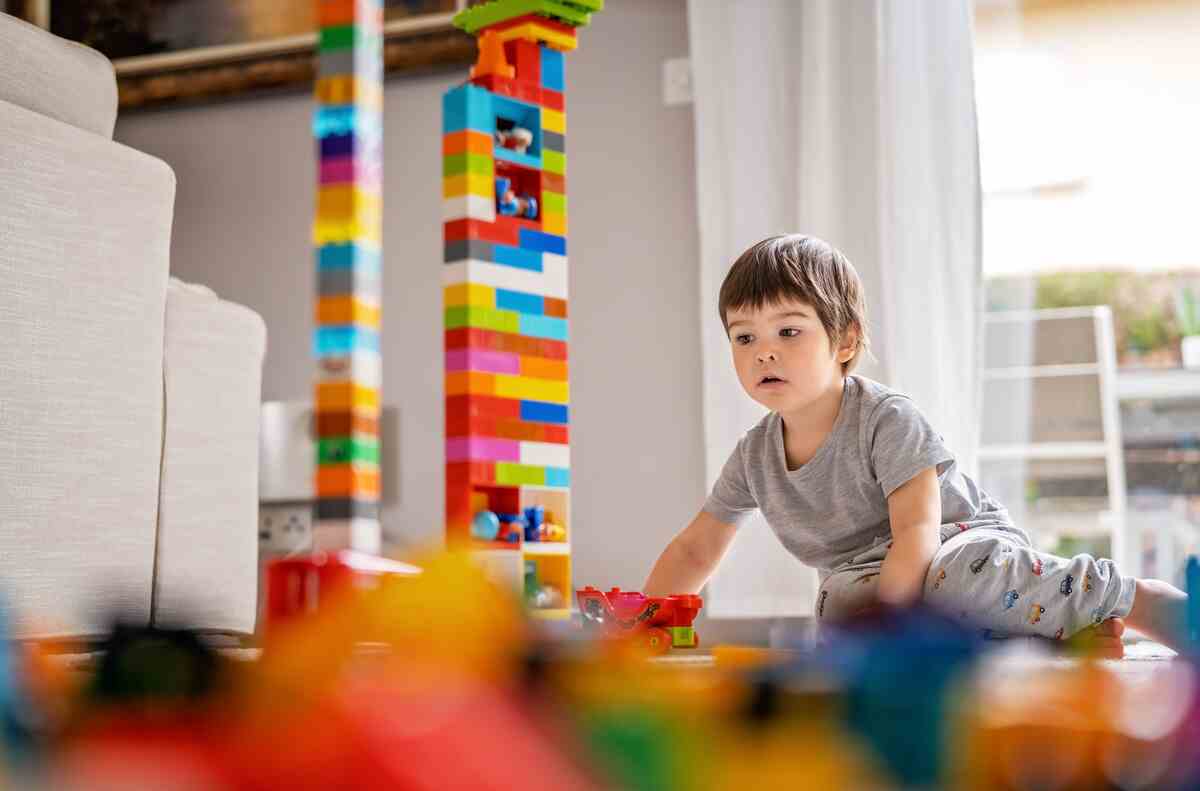Blogs and Articles
Welcome to the Sugar n Spice Daycare Center and Kindergarten blog! This is a place where parents can find helpful tips and advice on a variety of parenting topics, including early childhood development, child behavior, and parenting hacks. We also share articles about our daycare program and the events and activities that we offer.
Whether you're a new parent or a seasoned pro, we hope you'll find something useful on our blog. Please feel free to leave comments and share your own parenting tips with us. We're always learning new things, and we love hearing from our readers.

Foster Your Child's Love of Learning at Interactive Centers
What is Interactive Learning?
Imagine a classroom buzzing with activity. Children aren't sitting passively, but are actively engaged in building a miniature city with blocks, planting seeds in a pot, or sorting colorful beads. This is the essence of interactive learning – a teaching method that goes beyond rote memorization and prioritizes active participation.
Interactive activities go beyond simply listening or watching. They encourage children to use multiple senses. By touching, manipulating materials, experimenting, and exploring the world through sight, sound, and touch, learning becomes a more engaging experience. This multisensory approach caters to different learning styles and helps solidify information in a child's mind.

The Power of Interactive Learning in Your Child’s Development
Interactive learning isn’t just about fun and games—it’s a powerful way to ignite a lifelong love of learning in your child. Here’s how it benefits them:
1. Boosts Cognitive Development
Imagine your child, like Sarah, a curious four-year-old, building a tower with blocks. While it might seem like simple play, they’re actually developing critical thinking, problem-solving, and spatial reasoning skills. Each block they carefully stack strengthens their brain’s ability to process information and connect new ideas to what they already know. Interactive activities help your child’s brain grow and flourish, making learning an exciting adventure.
2. Sparks Creativity and Curiosity
Interactive learning environments give your child the space to let their imagination run wild. Whether they’re creating art, role-playing, or building their own miniature city, these activities help spark their creativity. Your child can express themselves in new ways and explore endless possibilities. This freedom to explore fuels their natural curiosity, setting the stage for a lifelong love of learning.
3. Enhances Social and Emotional Skills
Your child doesn’t learn in isolation—many interactive activities encourage teamwork and collaboration. For instance, when your child puts on a puppet show with friends, they’re learning how to communicate, share ideas, and celebrate others’ successes. These experiences help them develop important social and emotional skills, like empathy, patience, and understanding, which are crucial as they build relationships and navigate the world.
4. Promotes Communication Skills
Interactive learning also provides your child with endless opportunities to talk, explain their ideas, and ask questions. Whether they’re participating in group activities or sharing their thoughts with you, these experiences nurture their communication skills. Your child gains confidence in expressing themselves while also learning to listen and learn from others, setting a strong foundation for effective communication throughout their life.
5. Builds Confidence and Self-Esteem
As your child masters new skills or completes interactive tasks, they experience a sense of achievement that boosts their confidence. Every success, no matter how small, makes them feel capable and proud, motivating them to take on new challenges. This growing sense of confidence and self-esteem will encourage them to approach learning with excitement and a positive attitude.
Interactive learning not only engages your child but also helps them grow in ways that prepare them for success both in and out of the classroom. Through these activities, they’ll gain the skills and confidence needed to thrive now and in the future.

Interactive Learning Centers: Nurture Your Child's Love of Learning
With so many early childhood programs available, how do you choose one that prioritizes interactive learning? Here are some tips:
Look for a "Hands-on Learning Center": The classroom environment should be filled with age-appropriate materials and learning stations that encourage exploration and discovery. This could include blocks, puzzles, art supplies, science kits, and dramatic play areas.
Observe the Activities: Schedule a visit to the learning center and observe how teachers engage with children. Are they facilitating discussions, asking open-ended questions, and encouraging children to participate actively?
Ask about the Curriculum: Does the curriculum focus on providing a variety of interactive experiences across different developmental domains, including language, math, science, social-emotional learning, and the arts?
Consider the Teacher-to-Child Ratio: A smaller class size allows for more individualized attention and provides more opportunities for children to participate in learning activities actively.
Creating an Interactive Learning Environment at Home
Have you ever noticed your child completely engrossed in building a tower of blocks or lost in a world of pretend play? These moments aren't just fun; they're powerful learning experiences! At Sugar N Spice Daycare and Kindergarten, we see the magic of interactive learning every day. But how can you create a similar environment at home to nurture your child's natural curiosity?
The good news is, you don't need anything fancy! Interactive learning simply means creating opportunities for your child to explore, experiment, and engage with the world around them.
Imagine this: 5-year-old Kelly is helping her dad bake cookies. She cracks eggs, measures flour, and stirs the batter. This is a fantastic learning experience! Sarah practices counting as she adds ingredients, strengthens her hand-eye coordination while mixing, and even gets a mini science lesson on how ingredients transform in the oven.

This is the power of a hands-on learning center! You can even create a dedicated space, even a corner of your kitchen, where your child can explore different materials and activities. Stock it with age-appropriate items like blocks, puzzles, play dough, crayons, and books. Rotate the materials regularly to keep things fresh and exciting.
Let's take another example. Imagine 3-year-old Alex playing with a basket of colorful scarves. He might drape them over furniture, creating a cozy tent. This simple activity sparks his imagination, encourages creative movement, and even introduces basic color recognition.
Remember, the key is to be present and engaged. Ask questions, narrate your child's actions, and participate in their play. This creates a rich learning environment and strengthens your bond.
So, the next time you're wondering how to nurture your child's development, look around! Your home is filled with potential for interactive learning. With a little creativity, you can transform everyday activities into exciting learning adventures.
Ready to get started? Here are some quick tips:
Follow your child's interests: Is your child fascinated by dinosaurs? Create a dinosaur sensory bin with dried beans or lentils, plastic dinosaurs, and other objects.
Turn chores into learning experiences: Sorting silverware by size can be a fun way to practice early math skills. You can also ask your child to count how many socks there are in a load of laundry or how many plates need to be set for dinner.
Make learning playful: Sing songs, read stories with different voices, and create silly games. Dress up in costumes or use household items as props to reenact favorite stories or create your own adventures. This encourages creativity, language skills, and imaginative play.
By embracing interactive learning, you'll be amazed at how much your child can discover and achieve – all while having a blast!
Conclusion
The interactive learning method goes beyond conventional educational approaches, establishing a dynamic setting for children to thrive by fostering curiosity, imagination, and practical knowledge. This new method not only engages children's interests but also develops crucial abilities like analytical thinking, teamwork, and finding solutions. These abilities are essential not just for academic achievement but also for dealing with the challenges of life outside school, preparing children for continual learning and flexibility in a world that is constantly evolving.
Interactive learning emphasizes the importance of exploration and discovery. It encourages your child to ask questions, seek answers, and engage actively with their surroundings, transforming learning from a passive activity into an exciting journey of self-discovery. This shift is crucial in fostering a genuine love for learning, as children learn best when they are emotionally invested and actively involved in the process.
As you reflect on the vital role of interactive learning, remember that nurturing curiosity in your child goes beyond mere academic instruction. It’s about creating an environment that values questions over answers and exploration over rote memorization. When you prioritize interactive experiences, you empower your child to think independently and approach challenges with confidence and creativity.
By prioritizing interactive learning, you can nurture a child's natural curiosity, fostering a love of learning that extends far beyond the classroom!
This approach not only equips them with essential foundational skills, but also helps develop critical thinking, problem-solving abilities, and a sense of collaboration – all of which are vital for future academic success.
To learn more about the power of interactive learning, call us at (205) 822-8581.
2025 © Sugar N Spice Day Care & Kindergarten, LLC, All rights reserve
Privacy Policy | Terms and Conditions
Powered by Kyrios Systems
